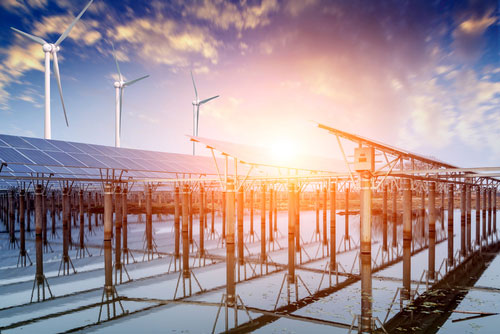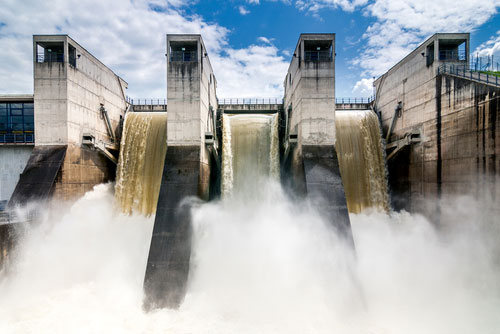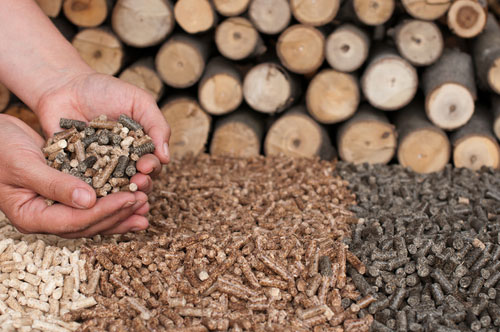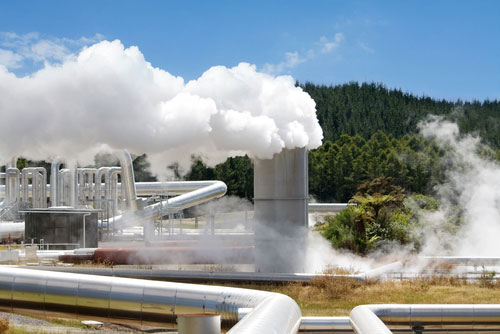Which transport do you want to travel in the future ?
Thanks
means of transport you want to travel in the future
Means of transportation I want to go in the future are flying cars
I believe that in 20 years the cars we drive will not be that different. I think most of the cars will move away from traditional fuel sources, but for the most part, will remain unchanged. I think the biggest problem we face isn't changing the vehicle itself, but the infrastructure that it depends on. I believe in the next century we will see a change in the road systems which will allow for greater density of vehicles, reducing the amount of space needed for roads and highways. Americans want a vehicle that can go anywhere, off road, on a race track, or down the freeway, and I believe in the future we will have multiple cars for different uses. One car for cruising around town, probably a fully electric vehicle, and another for commuting and urban driving. For those who still crave a little dirt under their tires, I think there will always be traditional Jeeps, trucks, etc. We will always have a large need for construction equipment, and I don't see those vehicles changing, other than by converting to cleaner fuels. I also believe that before 2050, self-driving cars will be coming on the market. If a 'track' system, or some system of guidance were implemented on major thoroughfares and in urban areas, a commuter could simply pull onto the freeway and switch to autopilot. This would allow cars to flow in a much more organized fashion, allowing higher speeds, safer roads, and fewer emissions caused by road congestion. The other thing I see increasing is the use of air travel. If aircraft could be made easy enough to fly by the average Joe, with a licensing system equivalent to the DMV, I believe more people would travel by air. Whatever happens, I believe or streets will be safer to drive on, and our cars will be more fun to ride in.
Where do you want to travel to in the future?
->I want to travel to Japan.
Hãy trả lời các câu hỏi sau:
1. Do you like to travel? Why?
2. When is the best time to travel?
3.Have you ever been on a long trip?( If yes, say where you went)
4.And what did you do in there?
5. Where( Which country or place) would you travel to(in the future)?
6. What should you prepare before traveling?
7. Do you prefer traveling alone or with friends?
8. What form of transport do you prefer to use when you travel?
Do you like traveling? Do you want to travel in Vietnam or travel abroad? which country do you want to visit? why?
EX / VD:
Do you like traveling?
=> Yes, I do.
Do you want to travel in Vietnam or travel abroad?
=> I want to travel abroad.
which country do you want to visit? why?
=> I want to visit England because I want to know more about countries in the world.
Work in groups. Discuss the following questions.
Which of the characteristics of independent learners do you think you have? Which one do you want to develop in the future?
A list of characteristics of independent learners for discussion purposes:
Self-motivated: Independent learners are motivated by their own interests and goals, not just external rewards or pressures.
Self-directed: They take responsibility for their own learning and actively seek out resources and opportunities to improve their knowledge and skills.
Self-aware: They understand their own strengths and weaknesses, learning style, and preferences, and use that knowledge to guide their learning process.
Goal-oriented: They set clear and specific learning goals and regularly assess their progress toward achieving them.
Persistent: They persevere through challenges and setbacks and keep working toward their goals.
Reflective: They regularly reflect on their learning experiences and use that feedback to improve their learning strategies.
Resourceful: They know how to find and use a variety of learning resources, including books, online courses, mentors, and peers.
Curious: They have a strong desire to learn and explore new ideas and topics.
Creative: They think outside the box and find innovative ways to solve problems and achieve their goals.
Collaborative: They work well with others and are open to learning from different perspectives and experiences.
trả lời các câu hỏi sau giùm nha
what will you do to save energy in the future?why ?
what type of energy in your country?
if you were richs, which country would you like to go to?why ?
what must you do when you use a means of transport on the road?
how do you go to school in the future?
1)To save energy for today and for the future, I'll use the solar energy.Because that is a natural energy.We can also use the reusable shopping bag.
2) In my country,we've got solar energy,wind energy and water energy.
3) I would go to Korea,because it's a beautiful country.
4) I think I must go in the right side of the street.
5) I'll go to school by electric car.
1 . I usually read books while ............ a train
A. on b . over c . in d. at
2 . At 8 pm tomorrow , we ( play ) ............... tennis together
3 . Solar energy ( use ) ....... by many countries in the world in the future
4. I ( not / come ) ......... home for luch because i am planning to ear out with my friends .
5 . Why should we save energy ? ...................................................................
6 . Which transport do you want to travel in the future ? ......................................
Mong các bạn giải giúp dùm mình . Mình cần gấp !!
Cám ơn các bạn trước nha !!
1 . I usually read books while ............ a train
A. on b . over c . in d. at
2 . At 8 pm tomorrow , we ( play ) will be playing tennis together
3 . Solar energy ( use ) will be used by many countries in the world in the future
4. I ( not / come ) won't come home for luch because i am planning to ear out with my friends .
5 . Why should we save energy ?
Because energy isn't free, wasting energy is the same as wasting money and it isn't good for environment, either.
6 . Which transport do you want to travel in the future ?
A vehicle which it knows how to run, how to swim and how to fly.
1. How often do you watch film on TV?
2. What kind of film d you enjoy watching?
3. Have you ever seen any cartoon? Which cartoons?
4. Who is your favourite actor? Actrees?
5. Which kind og film do you like most?
6. Whatch is the best film you have seen recently?
7. Do you enjoy action film? Why?
8.Tell me three kind of film you've know?
9.How do you feel when you watch a gripping film?
10.How do you feel after you watch a horror film?
11.Can you nam kind of film you know?
12.How far is it from your house to school?
13.How long does it take do you go to school by bike?
14.Where should you walk across the street?
15.Who do you usually go to school with?
16.Why Should pedestrians wear light coloured clothes in the dark?
17.Should one drive after drinking alcohol? Why or aWhy not?
18.Which means of transport would you like most?
19.Do you want to have a driverless car in the future? Why or Why not?
20.When was the firt driverless car designed ?
21.What problem do you think future transport will have?
22.What will you do to save energy in the future?
23.What type of energy will be used in the future ?
24.What do you do save energy in your country?
25.If you were richs, which country would you like to go to? Why
26.what must you d when use a means of transport on the road?
27.How do you go to school in the future?
28. Do you like watch cartoons? Who is your favourite character?
1. How often do you watch film on TV?
=> Twice a days.
2. What kind of film do you enjoy watching?
=> Romance film.
3. Have you ever seen any cartoon? Which cartoons?
=> Yes . It's Doraemon.
4. Who is your favourite actor? Actrees?
=> My favourite actor is Thanh Duy . My favorite actress is Chi Pu.
5. Which kind of film do you like most?
-> Horror film.
6. Which is the best film you have seen recently?
=> Chang trai cua em
7. Do you enjoy action film? Why?
=> No , because I don't like action film.
8.Tell me three kind of film you've know?
=> Documentary , comedy , thriller ,...
9.How do you feel when you watch a gripping film?
=> I feel excited.
10.How do you feel after you watch a horror film?
=> I feel frightened
12.How far is it from your house to school?
=> It is about 5 metres.
13.How long does it take do you go to school by bike?
=> 2 minutes.
14.Where should you walk across the street?
=> At the zebra crossing
15.Who do you usually go to school with?
=> My friends.
16.Why Should pedestrians wear light coloured clothes in the dark?
=> Because the other road users can see them clearly and avoid crashing into them
17.Should one drive after drinking alcohol? Why or aWhy not?
=> No, he /she shouldn’t .Because it is very dangerous (he/she may cause an accident.)
18.Which means of transport would you like most?
=> Electic bicycle.
19.Do you want to have a driverless car in the future? Why or Why not?
=> Yes, because I don't need a driverto take me to some place.
21.What problem do you think future transport will have?
=> Bad weather.
22.What will you do to save energy in the future?
=> Turn off the TV when you're not watching , take showers instead of baths , don't leave the fridge door open , ...
23.What type of energy will be used in the future ?
=> Hydro , wind , goal , oil , ...
24.What do you do save energy in your country?
=> Turn off the TV when you're not watching , take showers instead of baths , don't leave the fridge door open , ...
25.If you were richs, which country would you like to go to? Why?
=> Korea
27.How do you go to school in the future?
=> I don't know.
28. Do you like watch cartoons? Who is your favourite character?
=> Yes . My favourite character is Doraemon.
Topic 1
1 What is renewable energy? Give some examples.
2 What is non-renewable energy? Give some examples.
Topic 2
1 Which hour are rush hours in your community?
2 Why should we travel by public transport instead of private transport?
3 What difficulties do you meet when you are stuck in a traffic jam?
4 What means of transport do you think will be used in the future?
Topic 3
1 Give four problems of overpopulation
2 Give measures to solve these problems
Renewable energies (or renewables) are ways to generate energy from (theoreally) unlimited natural resources. These resources are either available with no time limit or replenish more quickly than the rate at which they are consumed.
Renewable energies are generally spoken of as opposed to fossil fuel energies. The fossil fuels’ stocks are limited and non-renewable in the human timescale. The most known examples of these resources are coal, oil or natural gas. On the contrary, renewable energies are produced from renewable sources. Here, we’re talking about energy coming from solar rays, wind or water cycles – all theoreally unlimited on a human scale time.
Renewable energies are also often referred to as “green energies” or “clean energies”. Still, this doesn’t mean that these energies aren’t harmful to the environment and have zero impact. Nonetheless, they have a low environmental impact compared to fossil fuels. That’s why they’re increasingly becoming important elements in companies’ CSR strategies in terms of sustainable development.
There are several types of renewable energies that are produced by different sources such as the sun, wind or water. In fact, these renewables’ power consumption has been growing over the last year. They have provided 8% of the world’s electricity in 2017 and they now cover 1/3 of the power mix in Europe. At the same time, the energy grid gets 1/4 of the total energy in China and 1/6 in the United States, India, and Japan. Let’s learn more about them below.
Related content:Is Solar Energy Really Green And Sustainable?1 – Solar Energy

This type of renewable energy comes directly from the capture of solar radiation. Here, the solar radiation is absorbed by specific sensors and rebroadcasted following 2 possible operation modes:
Examples of Solar Energy in the World
It’s estimated that in 2017 1,6% of the worldwide generated energy came from solar sources. At the same time, solar power also contributed to 20% of the total energy growth in this same year. Some of the most known sources of solar energy are:
The Kurnool Ultra Solar Park in India. It has a total generation capacity of 1000MW and over 4 million solar panels installed;The Longyangxia Solar Park in China that has a total capacity of 850MW and covers around 25sq km.The Kamuthi Solar Facility in India: it has a total capacity of 648MV and covers 10sq km.Is Solar Energy Renewable or Nonrenewable?
Solar energy is inexhaustible in the sense that it will cease once the solar system’s star – the sun – dies. However, many people wonder if, from a perspective of human’s being able to capture and use solar energy in the long-term, whether solar energy is renewable or nonrenewable.
[Full answer available soon.]
2 – Windpower, a Renewable Energy
Wind power is another renewable energy. Here, the wind’s kine energy makes turbines spin and creates a mechanical movement. Afterward, a generator transforms this mechanical energy into electricity. There are several types of wind renewable energies: onshore wind turbines, off-shore wind turbines and even floating wind turbines. But the operating principles are basically the same for all these types of wind-generated energy.
Examples of Wind Power in the World
Wind power continues has also been growing, In fact, it provided 4.4% of global power generation in 2017. The highest installed wind capacity belongs to China (164GW). At the same time, in the EU, wind power provides 15% or more of the energy generated in several countries such as Germany, Portugal or Lithuania. Some of the most known sources of wind power energy are:
The Gansu Wind Farm in China. It is still under construction and it will be able to produce 20,000MV of power by 2020;The onshore Muppandal Wind Farm in India with a capacity of 1,500MW and over 3000 turbines;The Alta Wind Energy Center in the U.S. with a total capacity of 1,548MW that’s expected to reach 3,000MW by 2040;The Walney Extension in the UK. It has a total capacity of 659MW and it’s the world’s largest offshore farm.3 – Hydro-Electric Power

Hydro-electric power consists in the transformation of the kine energy of the water (from rivers, dams, marine currents or tides) into mechanical energy by turbines.
Examples of hydro-electric power in the world
The Sihwa Lake Tidal Power Station in South Korea. This is the world’s biggest tidal power installation and it has a capacity of 254 MW;The Rance Tidal Power Station in Brittany, France, has a 240 MW capacity;The Three Gorges Dam in China is the world’s largest power station in terms of installed capacity (22,500 MW).4- Biomass

Biomass is made up of organic materials from plants or animals that contain stored energy. The combustion of these natural materials produces renewable energy. Some examples of generating energy from biomass are:
Related content:
Palm oil has a huge environmental impact. What’s the impact of its use as a biofuel?What Is Biogas Energy Production?Examples of Biomass Energy in the World
Some of the most known biomass power plants in the world are:
The Iron Bridge power station in the UK, with a capacity of 740MW. It uses wood pellets as the main fuel;The Alholmenskaft power station in Finland. It has a 260MW energy generation capacity;The Polaniec power plant in Poland that uses mainly agricultural by-products and wood residues. It has a 205MW capacity.5- Geothermal Power as a Renewable Energy

The Earth generates and stores geothermal energy. In other words, radioactive materials decaying inside the Earth are emitting energy. Electricity can be created using directly or indirectly this energy, depending on the technology implemented. There are 3 main ways to use geothermal energy: